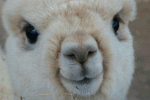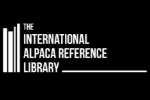Articles by Alpaca World Magazine:
French Letter Nov07
Andy Spillane
After a miserable spring and a damp summer we have enjoyed a beautiful mild autumn. The enjoyment marred only by the continued unseasonable mildness as we enter winter watching the inexorable spread of the blue tongue virus. As of Tuesday this had reached more than sixty percent of France and is predicted, by the Ministry of Agriculture, to be 100% by some time in Spring. Work continues apace for a vaccine and it is hoped to be available in 2008.
I have often found it strange how an item or project designed or bought for one purpose can provide a significant benefit in a totally unforeseen area. In the autumn of 2006 we purchased a Scanner. We had not been happy with our breeding programme depending on spit-offs. The scanner was for us a significant investment at around 2400 Euros and we were unsure if the investment was entirely justified, but we believed that we needed to improve our ability to predict pregnancy.
This autumn one of our alpacas gave birth to a female cria from one of our top studs. On the third morning we noticed the mother behaving strangely, obviously in great discomfort and rejecting the cria whenever she tried to suckle. The birth had been quick and easy and the entire placenta voided within the hour. On initial examination by ourselves we found an abundance of milk but the mother was in very serious pain with no obvious external signs of cause.
Our next step was to call our vet and we caught him between clients. He arrived late morning and by now the mother was showing serious signs of distress and the infant was weakening rapidly, refusing any form of bottle feeding. The vets initial external examination confirmed our own findings, much pain, much milk but no obvious signs of obstruction or infection. His highly sophisticated and expensive scanner was in use by a partner at a farm over an hour away so we offered our hand held model. After a little searching he located the problem, a very large blood clot pressing on the wall of the uterus and causing immense pain. A suitable pain killer was administered followed by a clot de-coagullent. Within ten minutes the mother was feeding her cria and twenty minutes later moving freely. Without doubt our scanner proved a major factor in saving the life of a cria and probably the mother. Expense on scanner suddenly justified.
In a strange way politics in the French Petite camilides world have followed a similar path. As many of you are aware the French alpaca/llama world is very factionalised, with five associations and one Syndicat Eleveur Professionale. This latter, SNELA, was formed in Autumn 2005 with high hopes that it could give leadership and cohesion to the amateur societies. For a while nothing changed and attitudes became more entrenched, rivalries more intense. Sadly a familiar story in the alpaca world everywhere.
In March 2007 the unforeseen and unpredicted enforcement by a local DSV of a ten year old directive was to change all this. Alpacas and llamas have always been considered ruminants in France, but health legislation concerning sheep and cattle has not been enforced on them. A Departmental (county)veterinary officer decided to do so and was backed by the Ministry and suddenly we were faced with draconian regulations and unreliable tests.
SNELA and the associations wrote letters to the Ministry and several agreed to allow SNELA to represent their interests. In France the world shuts down for July and August, so little was expected to happen before September.
In September several individuals and associations wrote to SNELA requesting information, a meeting to discuss policy and a long overdue,18 months since the previous, AGM. All such requests were peremptorily rejected by the self appointed president and several were told in conversation that she would decide policy and they would do as they were told. It became evident that the only concern of SNELA was to protect the multi-specie (cattle & sheep) breeders entitlement to government compensation in the event of culling. In the land of EGALITY this did not get a good reception.
The associations wrote individually to the Ministry and started to co-ordinate their efforts. Within weeks the various association presidents were freely communicating and co-ordinating their efforts, they rapidly produced a cohesive and compelling letter justifying their arguments and position. They also discovered that a private meeting had been arranged by SNELA with the ministry the day before a reluctantly called
AGM.
The associations wrote a joint letter to the Ministry and were promptly invited to attend the meeting along with Dr Guidicelli, a vet , breeder of alpacas and llamas and France?s foremost authority on these species. The meeting, on the 27/11/07 in Paris, proved both positive and productive.
The Director from the Ministry of Agriculture explained that his primary concern was for the health of the French population and French agriculture as a whole. Having said this, he recognised the concerns of the alpaca and llama community. He realised that we are a growing and developing industry and we must accept that legislation is inevitable for the protection of all. At the same time he agreed further research was essential before final specific legislation and accepted that testing should, in general, be on a voluntary basis at this time. If one opted for testing then animal registration was to be mandatory. He further accepted that compulsory registration, as requested by the associations of all small camelids, was desirable but pointed out that this was not practical for administrative reasons at present. It was accepted that current tests available were extremely fallible and research would take place to find the best solution, however it must also be acknowledged that all tests were fallible to a certain extent.
In answer to a question concerning the compulsory slaughter of animals he affirmed that a compensation package was not a problem, experts needed to be used to provide true values for this. He recognised that the associations had behaved responsibly in their reaction to these issues and had encouraged their members to be positive and proactive in trying to respond to these and other problems. He assured all that he was
not interested in ? a quick fix solution?, calling for a further meeting to discuss progress in three months.
It is indeed ironic that SNELA whilst arbitrarily trying to dominate alpaca affairs in France has succeeded in uniting the various associations in common cause for the first time in the history of small camelids. I can only hope that the associations will build upon this fledgling relationship. Sadly SNELA seems to be the only casualty, marginalised with only a handful of supporters remaining.
Tweet



